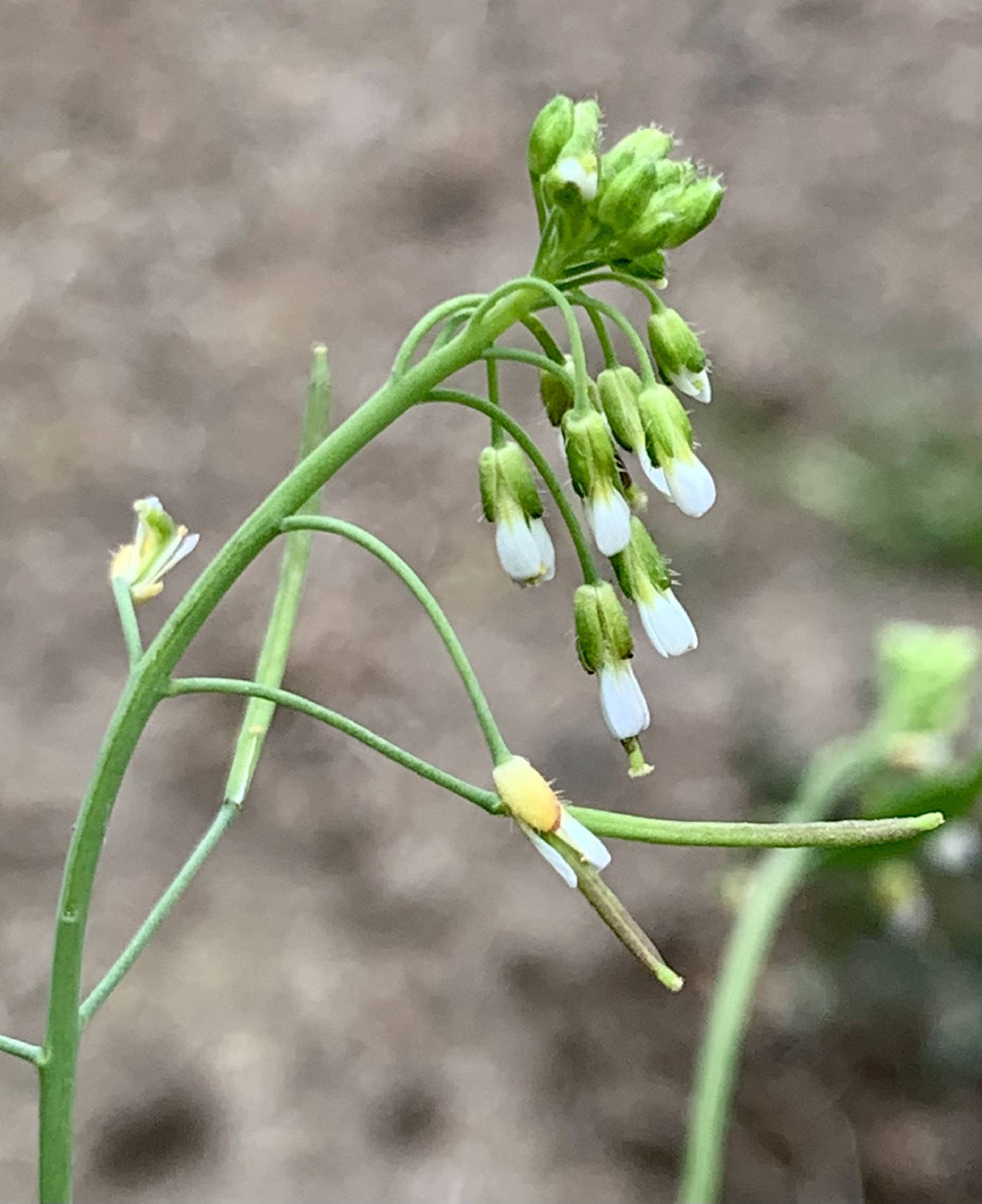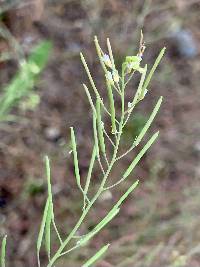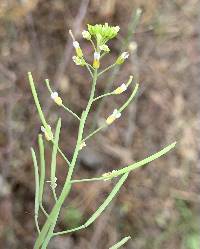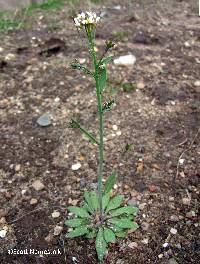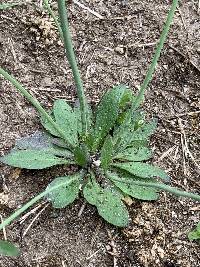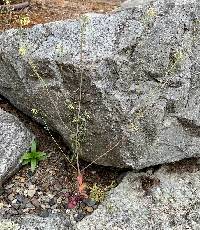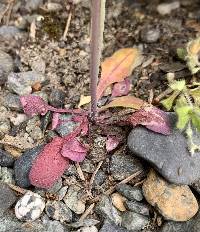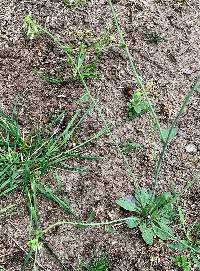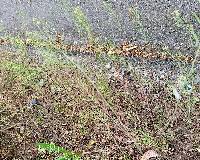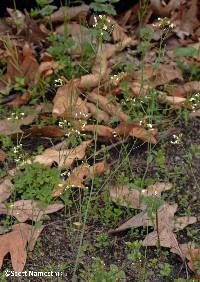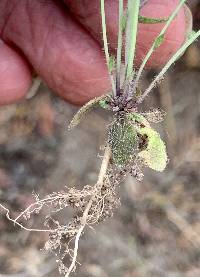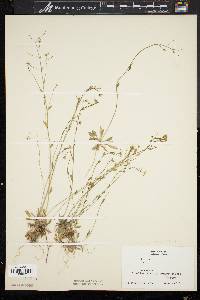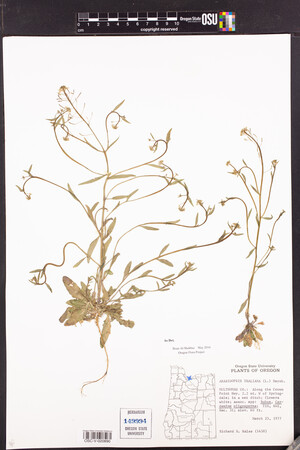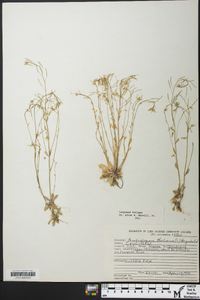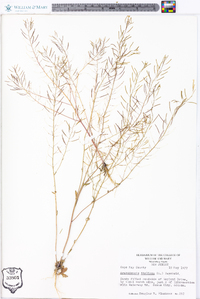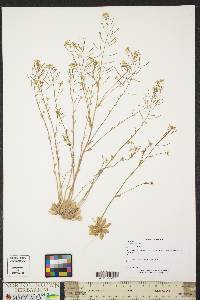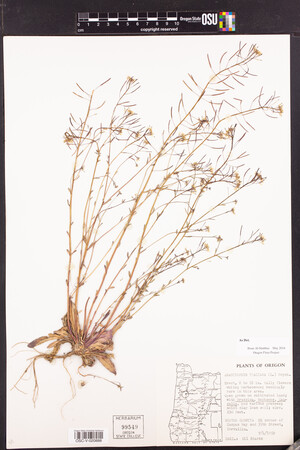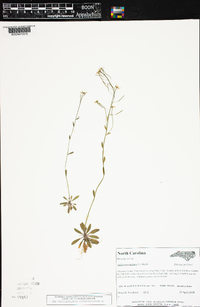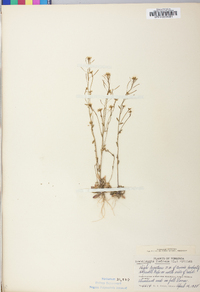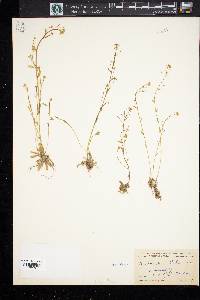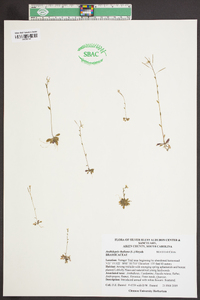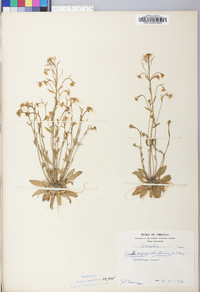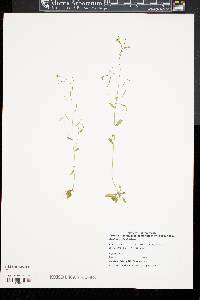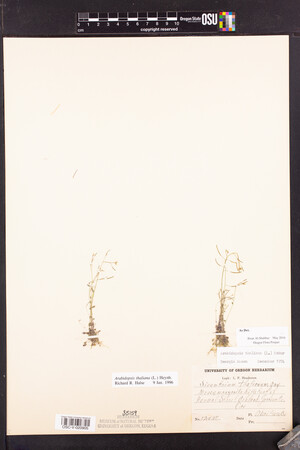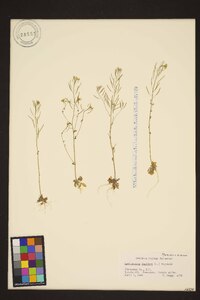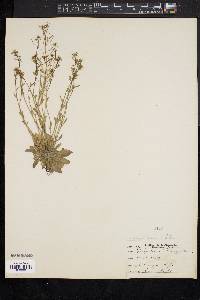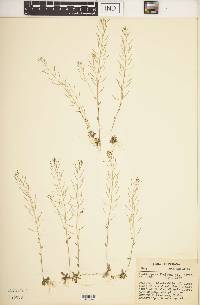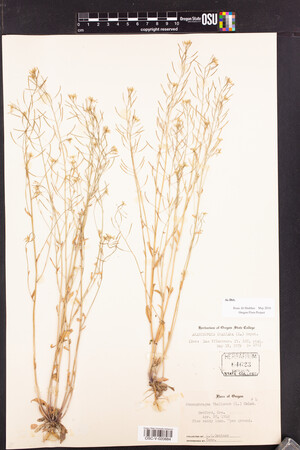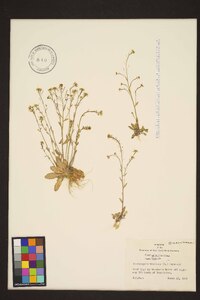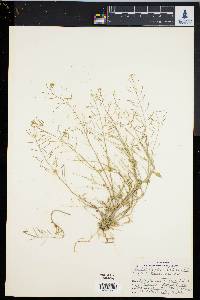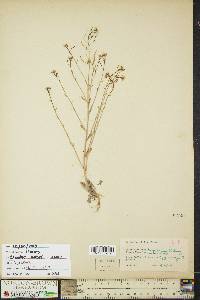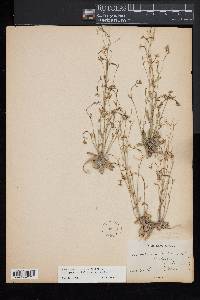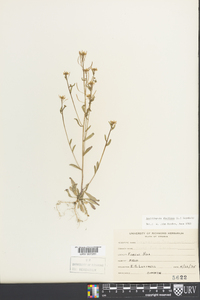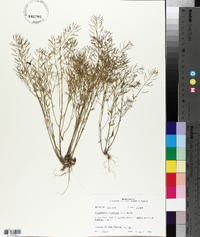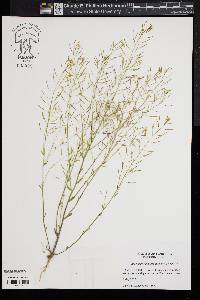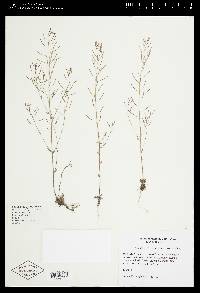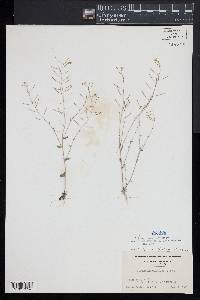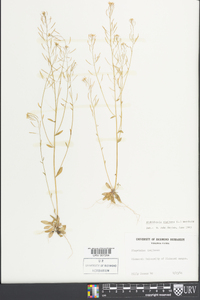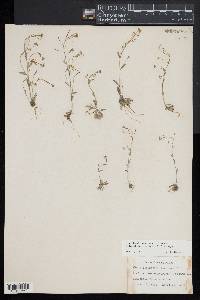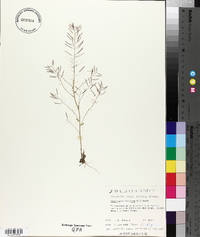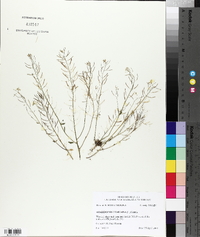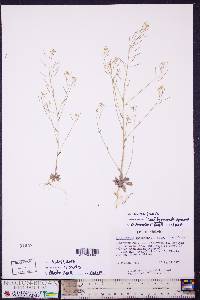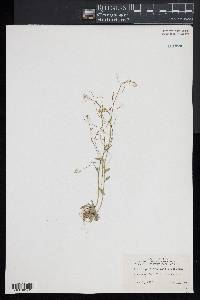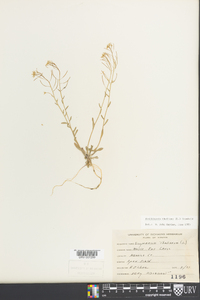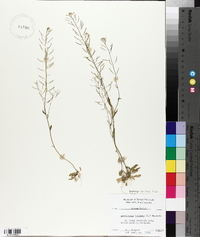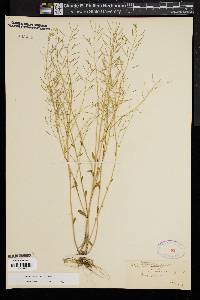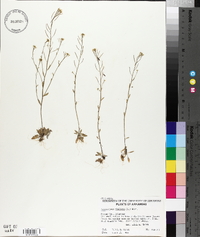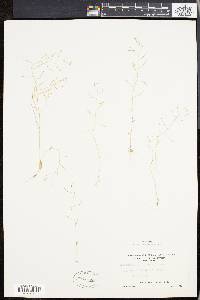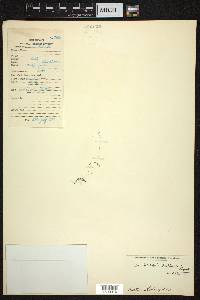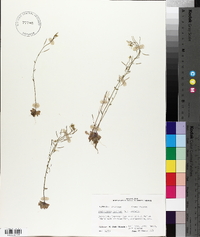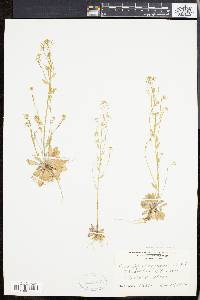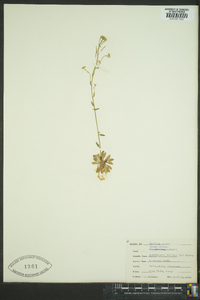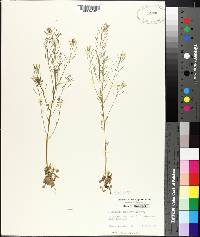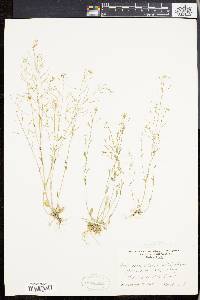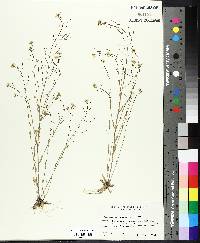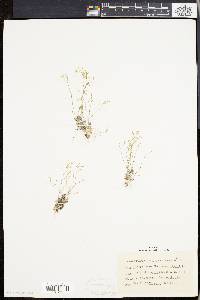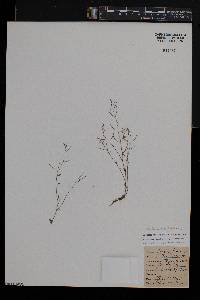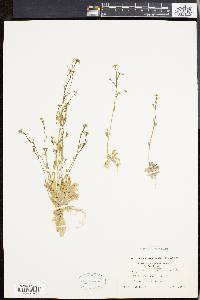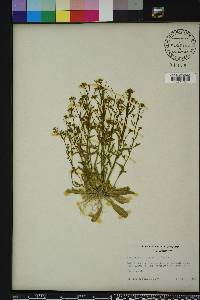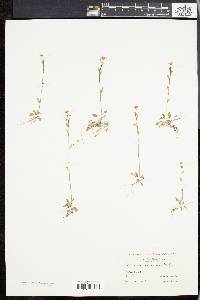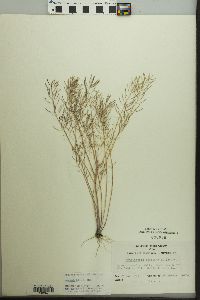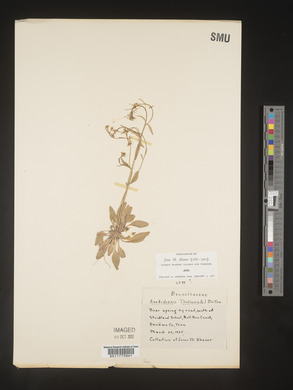
|
|
|
|
Family: Brassicaceae
Thalecress, more...Mouse-Ear Cress, mouseear cress
[Arabidopsis thaliana var. pusilla (Hochst. ex A. Rich.) O.E. Schulz, moreArabis thaliana Crantz, Cardamine pusilla Hochst. ex A. Rich., Sisymbrium pumilio Oliv., Sisymbrium thalianum (L.) Gaudin] |
Annuals; glabrous or pubescent, trichomes usually simple, sometimes mixed with stalked, forked ones. Stems simple or few from base, erect, unbranched or branched distally, (0.2-)0.5-3(-5) dm, pubescent basally, trichomes predominantly simple, glabrous apically. Basal leaves shortly petiolate; blades obovate, spatulate, ovate, or elliptic, 0.8-3.5(-4.5) cm × (1-)2-10(-15) mm, margins entire, repand, or dentate, apex obtuse, adaxial surface with predominantly simple and stalked, 1-forked trichomes. Cauline leaves subsessile; blade lanceolate, linear, oblong, or elliptic, (0.4-)0.6-1.8(-2.5) cm × 1-6(-10) mm, margins usually entire, rarely toothed. Fruiting pedicels divaricate, 3-10(-15) mm. Flowers: sepals 1-2(-2.5) mm, lateral pair not saccate basally, (glabrous or sparsely pubescent distally, trichomes simple); petals white, spatulate, 2-3.5(-4) × 0.5-1.5 mm, (base attenuate to claw); filaments 1.5-2 mm. Fruits cylindric or linear, smooth, terete, (0.8-) 1-1.5(-1.8) cm × 0.5-0.8 mm; valves each with distinct midvein; ovules 40-70 per ovary; style to 0.5 mm. Seeds light brown, (plump), ellipsoid 0.3-0.5 mm; cotyledons incumbent. 2n = 10. Flowering Feb-May. Sandy areas along roadsides, stream banks, railroad tracks and embankments, open pastures, grassy flats, fields, prairies, floodplains, woods, lawns, limestone ledges and crevices, bluffs, shale and serpentine barrens, gravel, sandstone; 0-1000 m; introduced; B.C., Ont., Que.; Ala., Ark., Calif., Conn., Del., D.C., Ga., Idaho, Ill., Ind., Iowa, Ky., La., Maine, Md., Mass., Mich., Miss., Mo., Mont., N.H., N.J., N.Y., NC., Ohio, Okla., Oreg., Pa., R.I., S.C., Tenn., Tex., Utah, Vt., Va., Wash., W.Va., Wis.; Europe; sw, c Asia; introduced also nearly worldwide. Arabidopsis thaliana is the most widely used model organism in plant biology. Its small genome size, fully sequenced in the year 2000, chromosome number, fast growth cycle (from seed germination to set in four to six weeks), small size (hundreds can be grown in a pot and thousands in a growth chamber), autogamous breeding system (induced mutations are expressed in two generations), and ability to grow on various synthetic media, all make the species an ideal system in experimental biology.
Annual herb 10 - 40 cm tall Leaves: mainly in a basal rosette, 1 - 5 cm long, oblong to spatula-shaped, mainly non-toothed, with star-shaped hairs. The stem leaves are smaller and linear to narrowly oblong. Flowers: in open, small-branched clusters, white, 2 - 4 mm long, 1.2 mm wide, spatula-shaped, gradually narrowed to the base. Petals four. Stamens six. Fruit: a narrow pod, ascending, widely divergent, 1 - 2 cm long, 1 mm wide, on a 5 - 10 mm long stalk. Similar species: Arabidopsis thaliana may be confused with A. lyrata, which has longer flower petals, larger seeds, and basal leaves with non-toothed to pinnately lobed margins. Flowering: April to mid-June Habitat and ecology: Introduced from Europe. Frequent in sandy fields throughout the southeastern sector of the Chicago Region. It has become naturalized in sandy disturbed soil and along railroad tracks. This ephemeral plant disappears completely by late June. Occurence in the Chicago region: non-native Notes: Arabidopsis thaliana is popular among botany graduate students and other researchers because it completes its life cycle in only a few weeks. It has become important in the study of plant development and genetics. Etymology: Arabidopsis means "resembling Arabis (rock-cress)." Author: The Morton Arboretum Annual or winter-annual 1-4 dm; lvs chiefly in a basal rosette, oblong to spatulate, 1-5 cm, stellate-hairy; cauline lvs smaller, linear to narrowly oblong; sep pilose; pet 2-3 mm; mature racemes very open, the widely divergent pedicels 5-10 mm; frs divergent or ascending, 1-2 cm נ1 mm; 2n=10. Native of Europe, naturalized in fields and waste places, especially in sandy soil, throughout most of the U.S. Apr.-June. (Sisymbrium t.) Gleason, Henry A. & Cronquist, Arthur J. 1991. Manual of vascular plants of northeastern United States and adjacent Canada. lxxv + 910 pp. ©The New York Botanical Garden. All rights reserved. Used by permission. From Flora of Indiana (1940) by Charles C. Deam A weed of sandy soil usually found in pastures and fallow and cultivated fields. Sometimes it is common where it is found, especially in sandy, fallow cornfields. Its distribution in the state suggests that it prefers a sandy and slightly acid soil. ...... Indiana Coefficient of Conservatism: C = null, non-native Wetland Indicator Status: N/A Diagnostic Traits: Rosette leaves often pinnately-lobed, to 5.5 cm long; stem leaves not auriculate; petals 4, white, mostly 2–4 mm long; fruit pods terete, 1-4 cm × 0.6-1 mm; seeds <0.6 mm long. |
|
|
|

